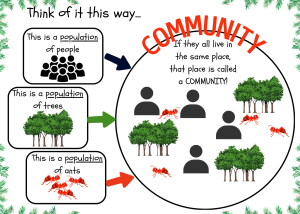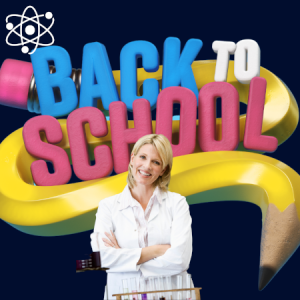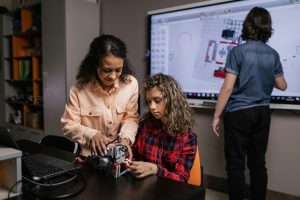Being organized is the key to sanity in the science classroom.* Well, actually, any teacher’s classroom. But, being a science teacher, there are a few other things you have to keep in mind. Now, this post is basic, and, thus applicable to all subject areas. Future posts will focus on organization in the science classroom.
How do I know?
As a science teacher for almost 30 years, I have had my share of organized chaos. Am I a perfect example of organizational skills? Well, no, not in all respects. But, I have had much experience seeing what does and does not work. Use my successes and failures to create a more organized science classroom.
It all starts by getting an excellent birds-eye view of the system. This overview is to help you put things into perspective.
Before the year starts
Before the kids arrive, you will attend many beginning-of-year meetings. Take steps to prepare for your first day with students. There never seems to be enough time to do all you need to do.
10,000-foot view
In thinking about the start of the year, envision your school and community. Let’s dive into these areas to frame up a method to stay organized. We’ll start from the 10,000-foot view.
School: As a whole, the building administration, guidance counselors office, nurse, special education service, and English as a second language (ESL) staff will all impact your class in some way. Some more than others.
Admin: They will provide you with a student and teacher handbook outlining all of the key areas that apply to each teacher, department, and the school as a whole. As you know, their job is to oversee and maintain the proper running of the school. They in turn are managed by central office staff for your school district.
Guidance/Counseling Office: These individuals create student schedules, file student records & grades, develop IEPs & 504’s and work with students to resolve issues.
Nurse: Self-explanatory
Special Ed services: They provide help for students in their caseloads. You will more than likely have several students from their service. They provide you with the accommodations for each child you teach. These guidelines help you maximize their learning.
ESL: As with Special Ed, they too will give you a snapshot of the students you will be teaching. These accommodations help you maximize these students’ move to fluency. Which will, in turn, assist them in maximizing their learning potential.
Others include para-professionals (who assist teachers with students), secretaries (the real backbone of the school..IMHO), cafeteria workers…
1000-foot view
You will have a department and/or team to work with. This post will focus on the science discipline. You may or may not teach different grade levels or courses. Regardless, your department and team are vital sources of knowledge. Use them. Even if you have taught for X number of years, when you start out new at a school, these individuals “know the ropes”.
10-foot view
The 10-foot view, that’s you and your classroom is covered in the next post(s).
NOTE: Your situation may vary a bit depending on geographical, grade level, or school type. I understand. For example, you may have a headmaster and not a principal.
(Background: I have taught in 7 different public school settings, 1 private, 1 parochial, and a home-school group.)
Read more in Part 2 of Organization in the Science Classroom.







